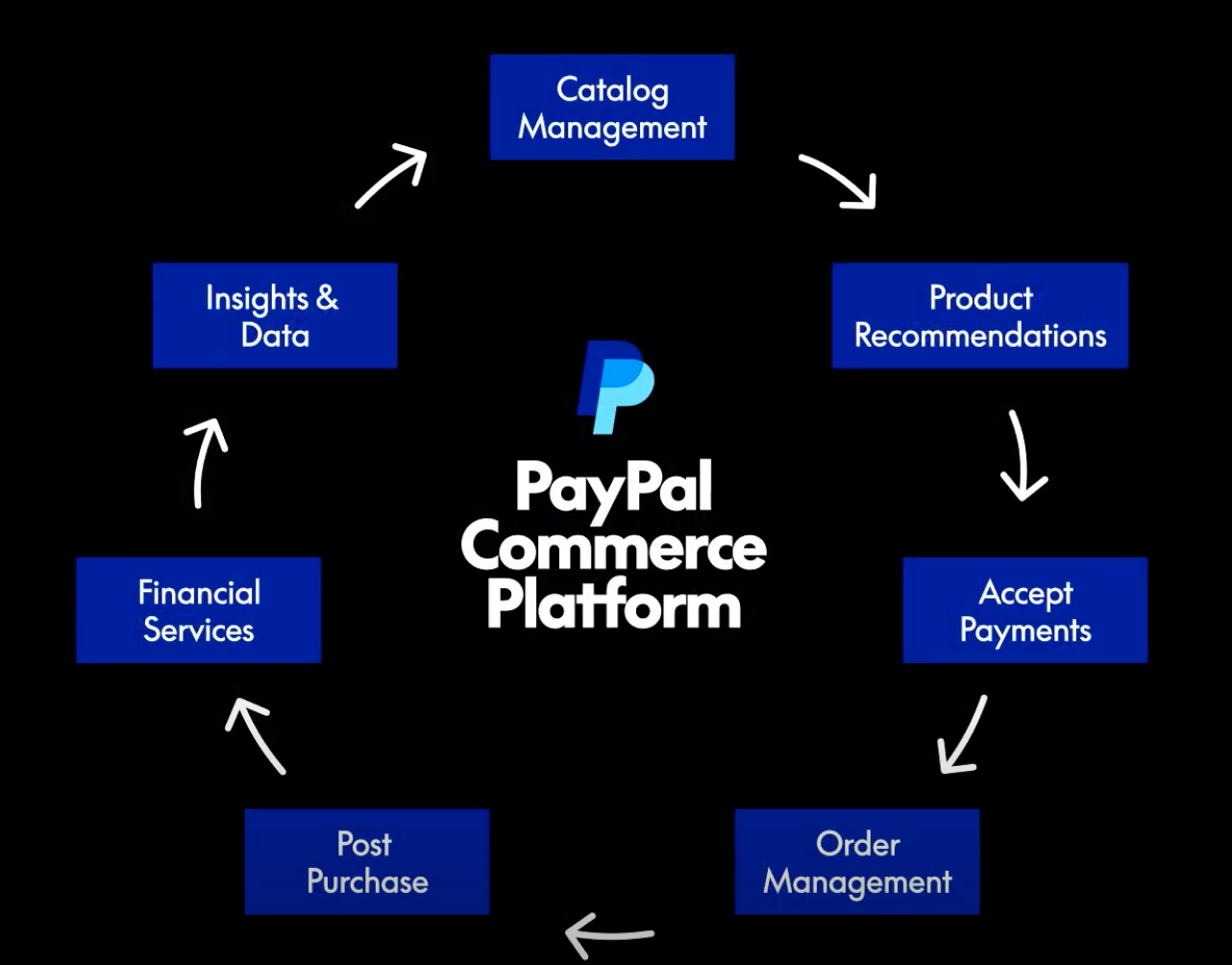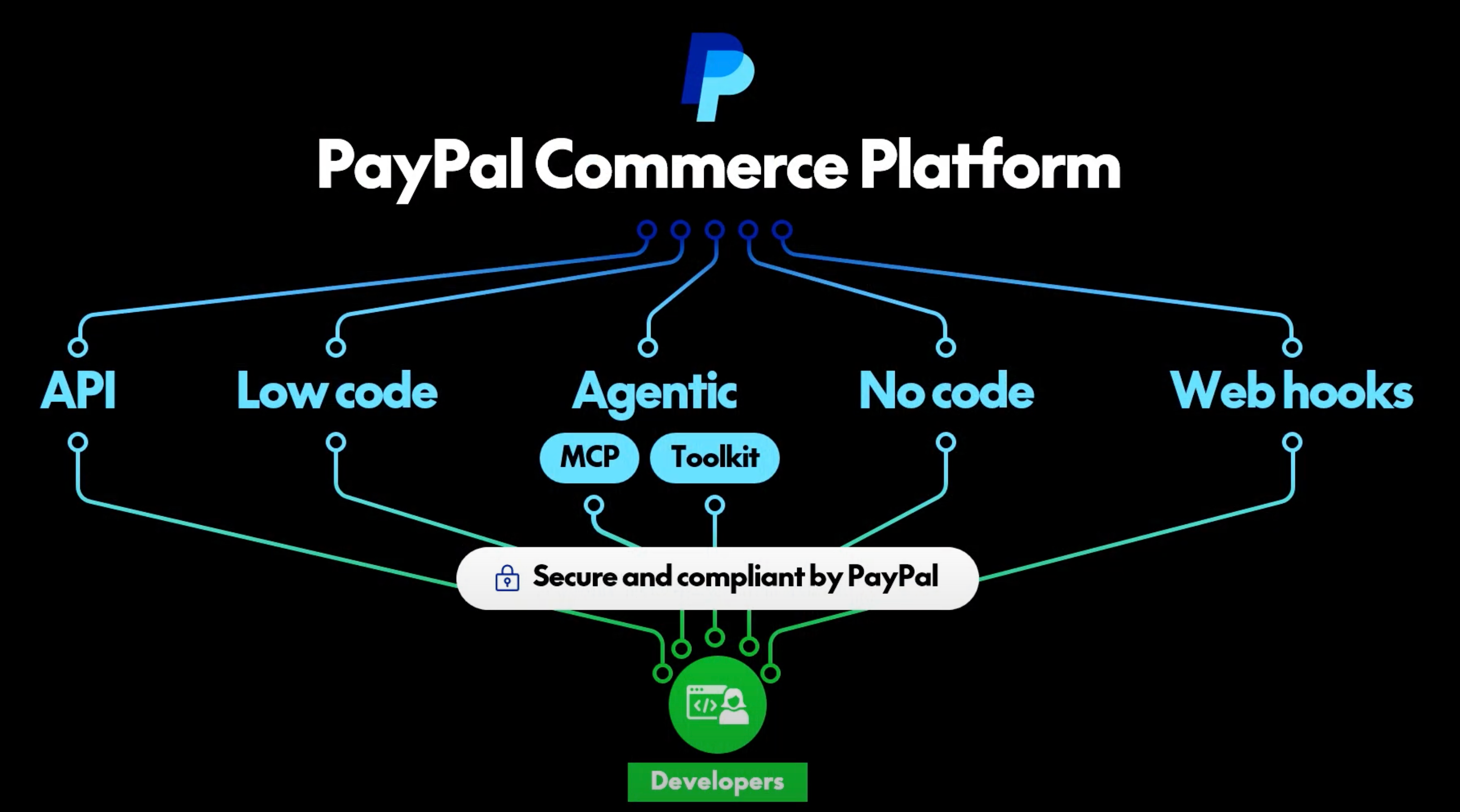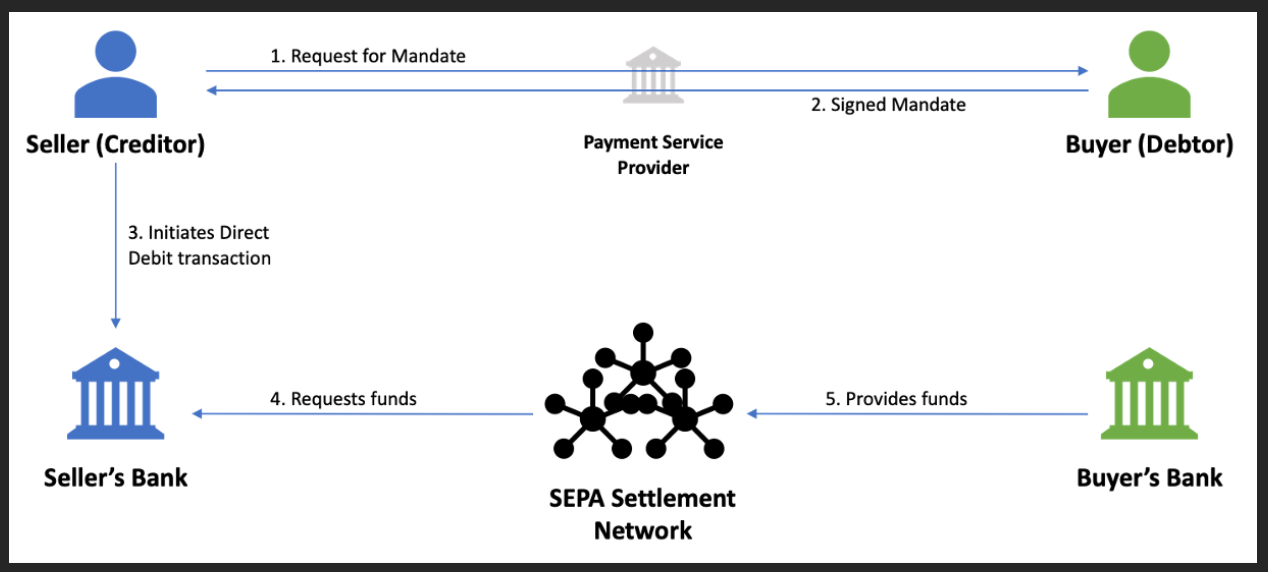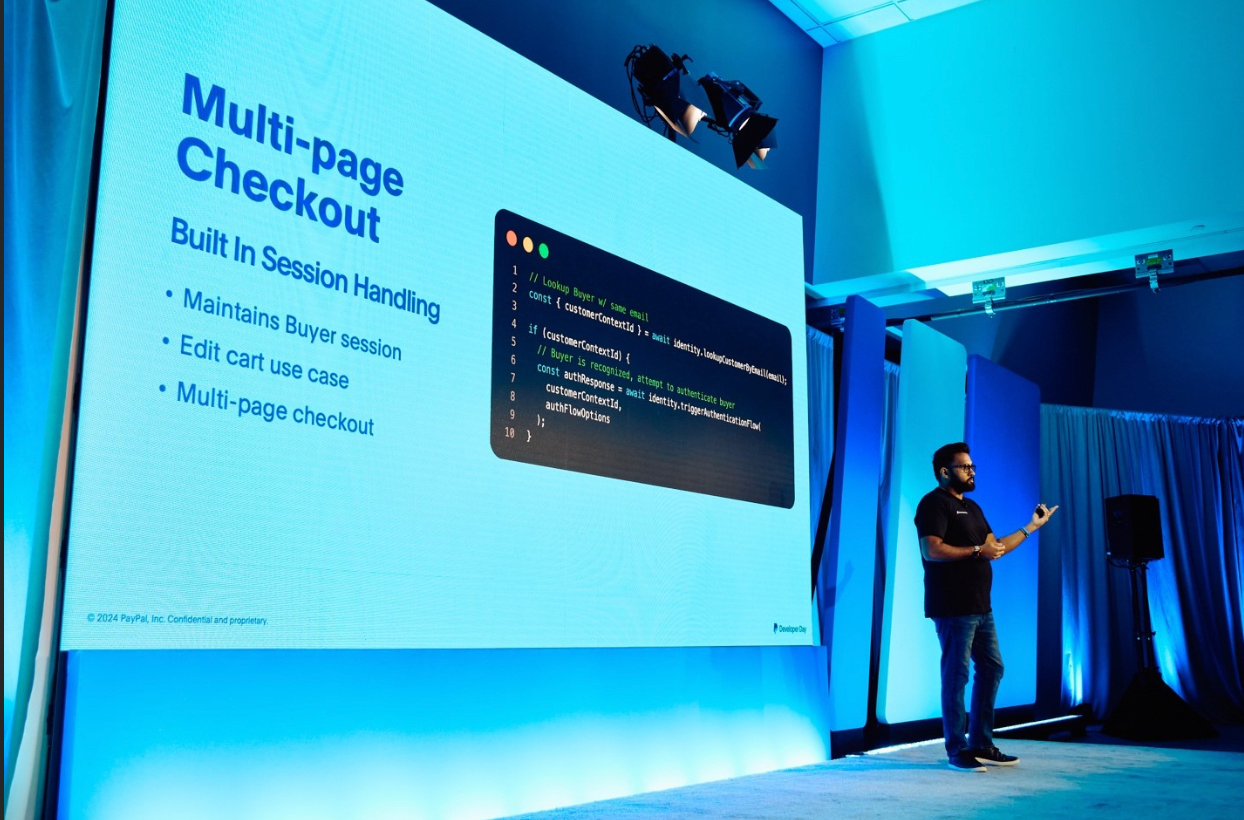How PayPal’s Latest AI Innovations Are Transforming Payment Integrations
May 16, 2025
7 min read

At PayPal, our mission has always been clear: to simplify and streamline integration across all our services. But in today’s fast-evolving digital landscape, simplicity isn’t just a UX choice, it’s a developer experience (DX) mandate. And for us, that means staying ahead of how developers build, test, and scale integrations.
To make integrating with PayPal simple and intuitive, we constantly evolve our developer tools. Whether you're writing your first line of code or deploying at enterprise scale, our goal is to ensure that working with PayPal is as seamless as possible.
To understand where we’re headed, it’s helpful to look at where we and the broader developer ecosystem have been. Through the lens of artificial intelligence, the journey of developer tooling has been nothing short of transformative:
2000s–Early 2010s: The Manual Search Era
Developers navigated documentation through Google searches and forum deep dives. Every integration required combing through APIs, testing assumptions, and relying heavily on institutional knowledge.
Mid-2010s–2019: The Auto-Completion Era
IDEs began offering smarter code suggestions with static analysis, type inference, and better autocompletion. This era made coding more efficient, but developers still had to know what to build.
2020–2022: AI-Powered Coding Assistants
With the introduction of OpenAI Codex and GitHub Copilot, AI started generating code alongside developers. These tools could complete functions, suggest logic, and boost productivity, but they were reactive and still needed strong human direction.
2023–2024: Context-Aware Development
AI matured into context-sensitive tools. Agents could now understand codebases, explain logic, detect bugs, and assist with debugging in a more holistic way. Developer workflows became increasingly assisted rather than just automated.
2024 Onwards: The Rise of Agentic Development
We’re now entering the era of agentic tools powered by frameworks like MCP (Model Context Protocol). These AI agents can reason, act, and call APIs autonomously. Instead of guiding code line by line, developers can now collaborate with agents to orchestrate full integration flows, troubleshoot issues, and even deploy features, all in a natural language interface.
As we look ahead, PayPal is embracing this future with a clear purpose: to make integrating payments feel less like an engineering task and more like a conversation. By aligning our developer platform with this agentic future, we’re building the foundation for an entirely new way to build.
Because in the end, great technology should disappear into the background, leaving room for developers to focus on what matters: innovation.

Empowering Developers: The Capabilities of PayPal Commerce Tools
This future isn’t just theoretical; it’s already being built into the PayPal platform. We’ve designed a powerful suite of PayPal Commerce Tools to help developers and businesses do more, faster, and smarter:
Catalog Management
Catalog management simplifies how products and services are presented by offering tools that streamline the customer experience. With features like Payment Links and Buttons, businesses can embed commerce directly into websites, emails, or social media platforms, making it easier for customers to complete purchases. Additionally, Business Profile Management ensures that your brand is represented consistently across all PayPal touchpoints, reinforcing trust and recognition with your audience.
Product Recommendations
Personalized shopping and checkout experiences enhance customer engagement by tailoring interactions to individual preferences. The PayPal Smart Wallet suggests preferred payment methods in real time, streamlining the checkout process. Additionally, personalized product and payment suggestions powered by the Commerce API enable businesses to deliver intelligent upsell and cross-sell opportunities, increasing conversion rates and overall customer satisfaction.
Accept Payments
A full-stack payment engine provides businesses with a comprehensive suite of tools to manage transactions efficiently. For businesses with recurring revenue models, Subscriptions offer a streamlined way to manage ongoing payments. Additionally, Invoicing supports seamless billing for both B2B and B2C transactions, making it easier to send, track, and manage payments across different customer segments.
Order Management
Order management tools help businesses efficiently handle fulfillment and meet customer expectations. With shipment tracking integrated directly into the PayPal dashboard, sellers can easily monitor delivery statuses and keep customers informed. Additionally, the ability to purchase shipping labels directly from the orders console streamlines logistics, saving time and reducing errors in the fulfillment process.
Post-Purchase Operations
Post-purchase operations provide complete lifecycle support to ensure a smooth experience for both businesses and customers. This includes efficient refunds processing, enabling quick resolution of returns and cancellations. Vendor payouts are streamlined for multi-party transactions, making it easier to manage complex payment distributions. Additionally, built-in dispute management flows help handle conflicts effectively, reducing friction and maintaining customer trust.
Financial Services
Financial services from PayPal are designed to help merchants grow and scale their businesses with flexible funding and modern payment options. Offerings like PayPal Working Capital and business loans tailored to a merchant’s transaction history provide accessible financing based on performance, not just credit scores. Additionally, Buy Now Pay Later (BNPL) options enhance consumer purchasing power, while support for digital currencies positions merchants to stay ahead in the evolving payments landscape.
Insights and Data
Insights and data tools empower businesses to make smarter decisions backed by actionable information. Financial reports support accurate bookkeeping and reconciliation, ensuring smooth financial management. Commerce insights offer a deeper understanding of customer trends and behaviors, while predictive analytics drive personalized business recommendations. All of these capabilities are made possible by leveraging the power of the PayPal Commerce Platform, enabling merchants to optimize operations and drive growth with confidence.
Every developer is different and so is every build. That’s why the PayPal Commerce Platform is designed to be flexible, modular, and developer-first.

You can personalize your interaction with the platform based on your comfort with code and your speed-to-market goals:
Want full control and flexibility?
Use our robust APIs and Webhooks to write end-to-end applications tailored exactly to your business needs.
Prefer speed and simplicity?
Choose from low-code or no-code options using our SDKs and Smart Payment Buttons. These tools get you up and running faster, without sacrificing core functionality.
Ready to build with AI?
Tap into our Agentic Development ecosystem using MCP and our Agentic Toolkit. These intelligent agents can handle integration tasks, configuration, and logic flows with minimal code; reducing complexity while maintaining flexibility.
Without MCP Server, integrating PayPal could take over 100 lines of code. With MCP, you can simply configure your client and connect with PayPal’s MCP Server and you’re ready to launch.
And most importantly, all these capabilities are secured, governed, and powered by PayPal’s trusted infrastructure.
Unlocking Insights with MCP: A Real-World Example
Let’s make this real.
Imagine you want a quick, clear view of your daily sales trends and sales by currency from your PayPal transactions. With traditional development, this might require extensive API calls, data parsing, and dashboard development.
But with an MCP-enabled client, you simply provide a natural language prompt. Your MCP client interprets the request, invokes the right PayPal tools, and begins processing, all without a single line of code.
Moments later, you’re looking at structured insights, ready for decision-making or integration into your business workflows.

Better yet, you can go beyond PayPal. MCP clients integrate seamlessly with other agentic apps like AWS, GitHub, Resend, and more, thus unlocking new workflows across platforms and streamlining previously siloed tasks.
Building What’s Next: Together
At PayPal, we’ve always believed in putting developers first. Whether you’re writing your first integration or scaling across markets, we want to make it easier for you to do what you do best: build great experiences.
That’s why we’re evolving. Bringing together AI, agentic tools, and a flexible commerce platform that adapts to the way you want to work. You can go full-code with our APIs, use no-code buttons to launch fast, or now, simply describe what you want and let MCP take care of the rest.
And it’s not just about writing less code. It’s about unlocking more value from your payments, your data, and your time. Because when integration is no longer a blocker, you can focus on what really matters: growing your business, delighting your customers, and innovating faster.
The tools are here. The platform is ready. And we're just getting started.
Let’s build the future of commerce together, with PayPal. For more information visit PayPal.ai.
Recommended

Developer Day for Fastlane by PayPal: A Masterclass of Innovation
5 min read

Pay by Bank for E-Commerce | Using Bank Accounts to Make Purchases with SMBs [SEPA]
5 min read

PayPal Dev Days 2025: Building Smarter Commerce
5 min read
